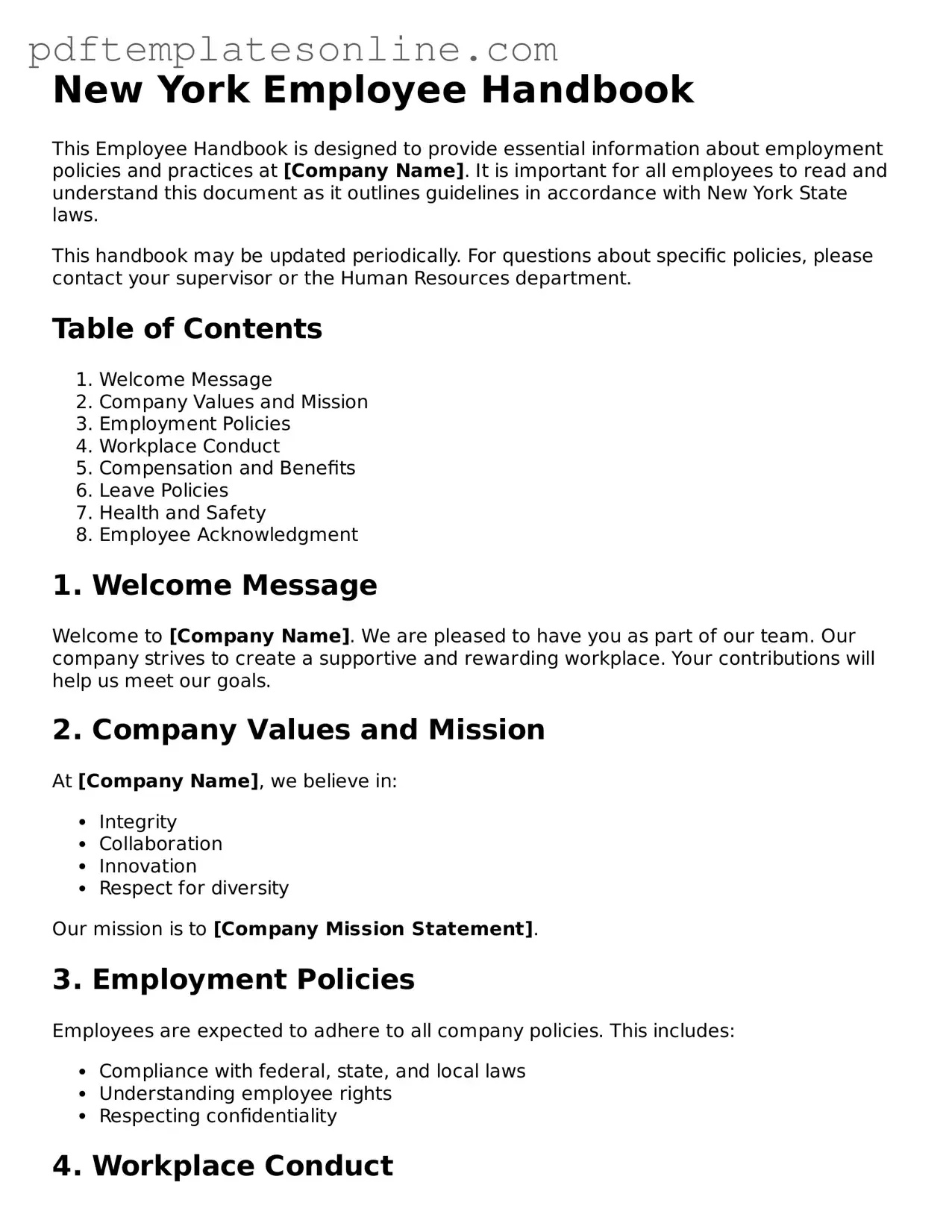Filling out the New York Employee Handbook form can seem straightforward, but many individuals make common mistakes that can lead to confusion or even legal issues. One significant error is failing to read the instructions carefully. Each section of the form has specific requirements, and overlooking these can result in incomplete or incorrect submissions.
Another frequent mistake is providing inaccurate personal information. This includes misspellings of names, incorrect addresses, or wrong Social Security numbers. Such inaccuracies can create problems down the line, especially when it comes to tax documentation or benefits enrollment.
Some employees neglect to update their forms after significant life changes, such as marriage, divorce, or a change in residency. Keeping this information current is crucial for ensuring that the employer has the correct details for communication and benefits purposes.
Additionally, many people overlook the importance of signing and dating the form. Without a signature, the form may be considered incomplete, and failing to date it can lead to misunderstandings about when the information was provided.
Another common error is not asking questions when uncertain about specific sections. Employees may skip over parts they don't understand instead of seeking clarification. This can lead to misinterpretations and errors that could have been easily avoided.
Some individuals also forget to review the entire form before submission. A final check can catch errors that might have been missed initially, ensuring that all information is accurate and complete.
Moreover, failing to keep a copy of the submitted form can be problematic. Without a personal record, it becomes difficult to reference the information later or to address any discrepancies that may arise.
Lastly, many employees do not take the time to familiarize themselves with the contents of the Employee Handbook itself. Understanding the policies and procedures outlined in the handbook is essential for compliance and can prevent future misunderstandings.
